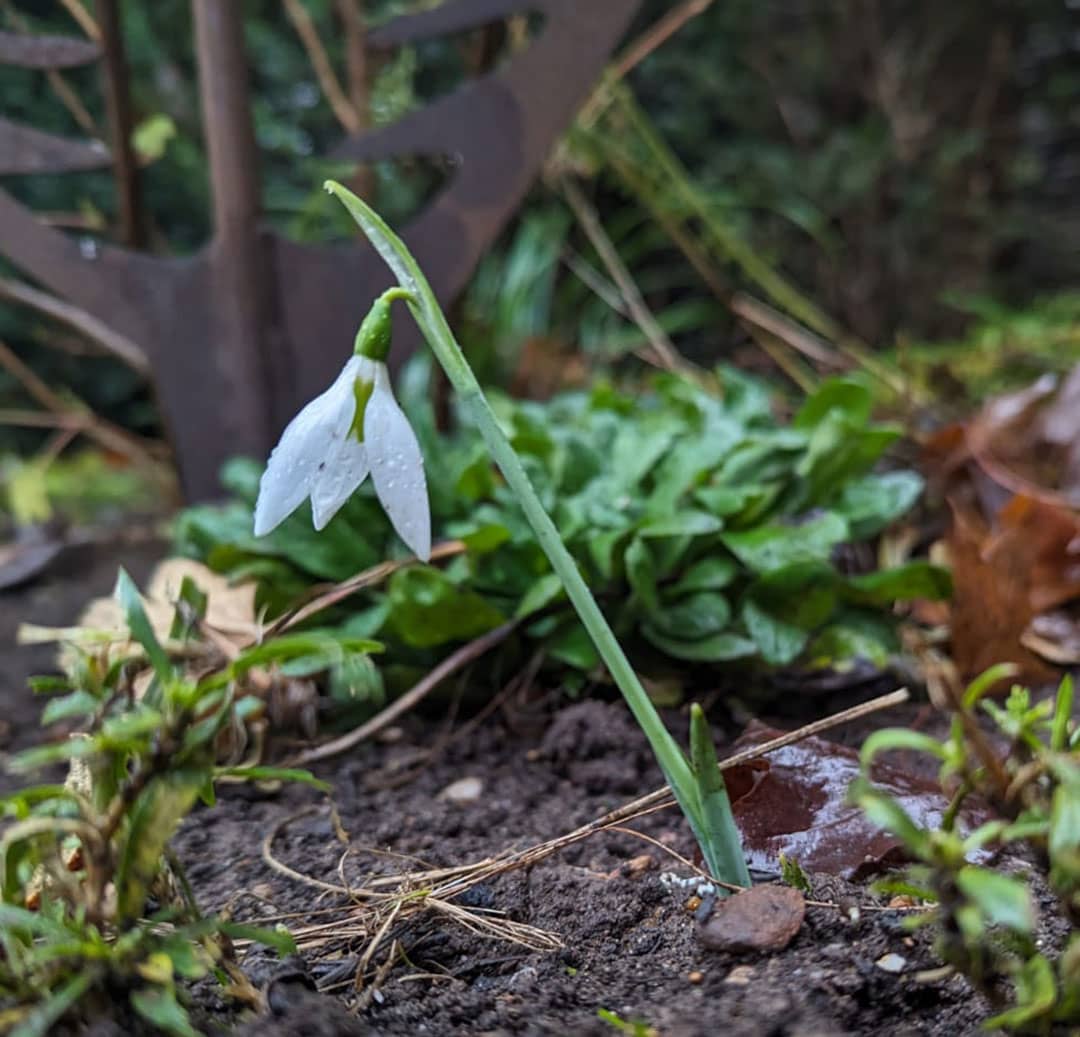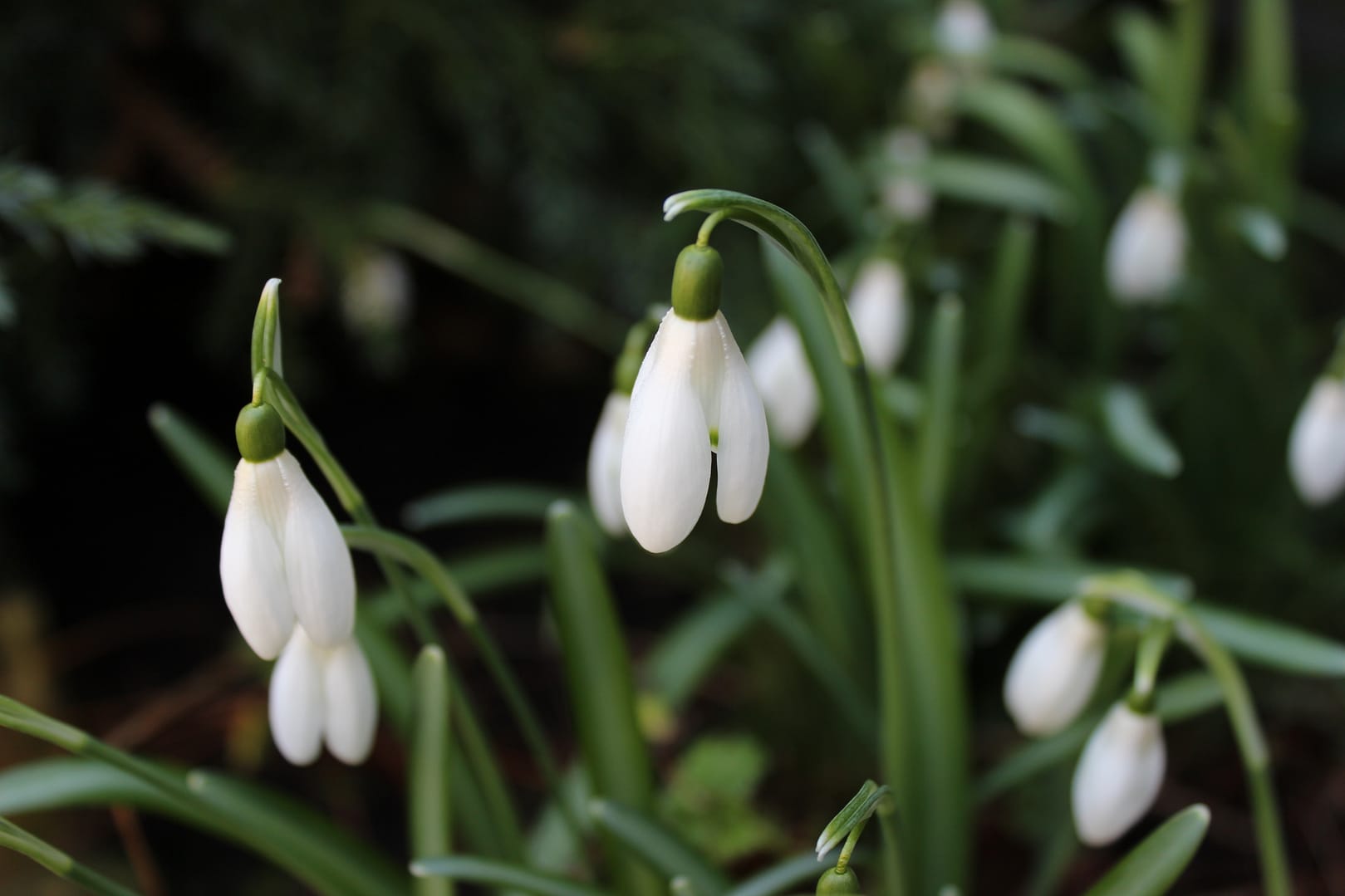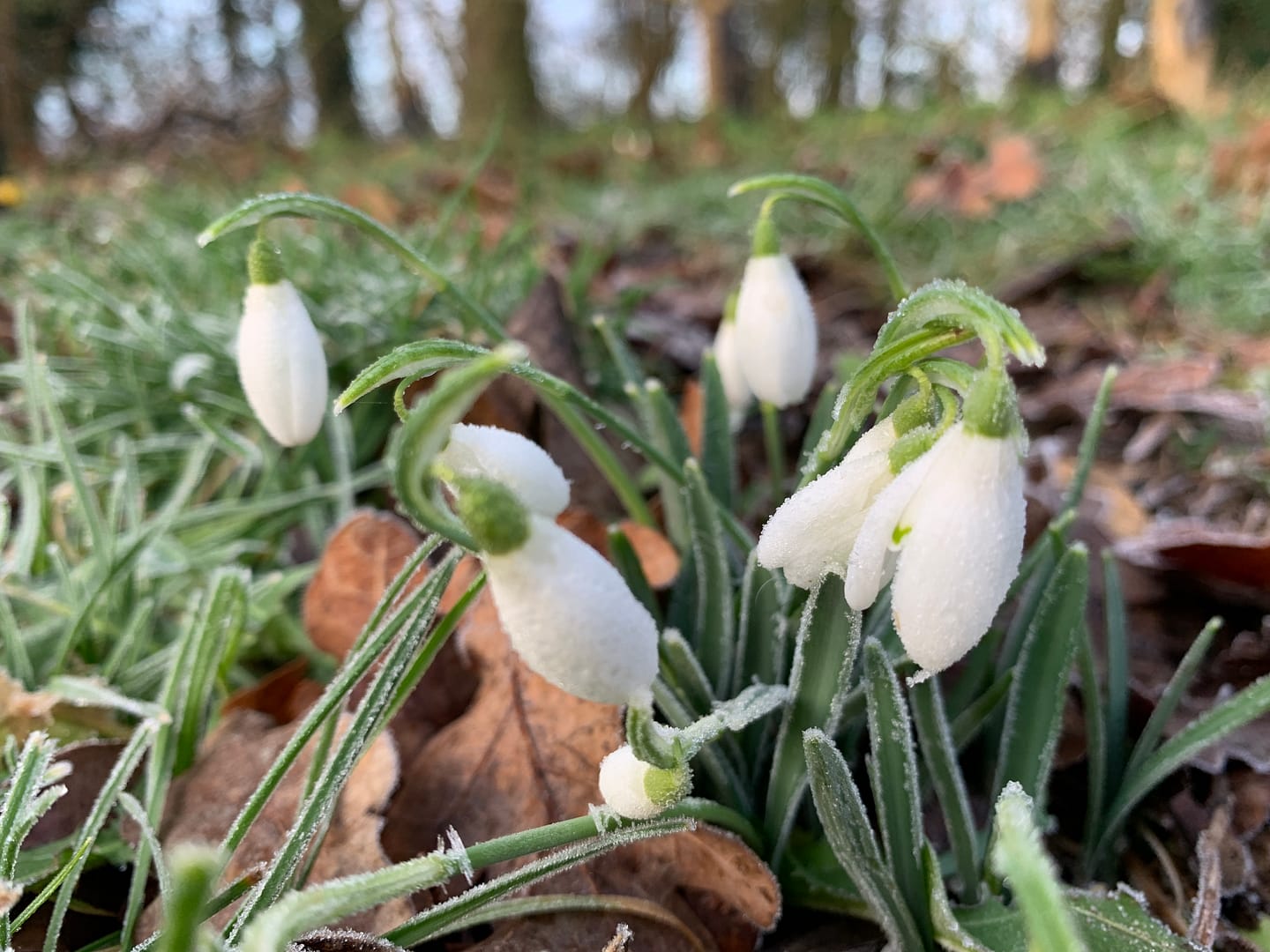Snowdrop
The snowdrop, commonly referred to as the ‘flower of hope’ is a honey smelling flower that decorates our countryside, woodland and gardens over the winter months with blooming as early as mid December in the warmer winter times.
With the soothing green stem, six white flower segments (3 on the outside & 3 tightly compacted) known as tepals form a bell-shaped head, to provide an aesthetician image (mainly from February to March). The snowdrop offers a sense of peace and relaxation and is a firm favourite of ours, and we hope yours too! Come with us as we develop our knowledge of the angelic winter-themed flower.
When and where to plant:
Best planted between October and November in bulb form, the snowdrop is a plant that favours the moist but well drained soil areas. As they flower early, it is a good idea to plant them in an area where they can be easily identified in their early stages of growth, whether this is on the edge of a path or visible from a window area. They also thrive in areas under trees or canopy, this way they can benefit from both the sun and shade and receive the right nutrients to grow. To receive the optimum display from the gorgeous plant, grow snowdrops in groups of between 10 and 25.

Tolerance and resistance:
These tough little (7-15 cm tall) snowdrops are considerably resilient to the frozen climate that the UK experiences through the cold winter months. It is the hardened leaves that allow it to break through the frozen ground and the sap that contains an antifreeze to prevent ice crystals forming on the plant itself. While it can survive these brutal conditions, this bloom struggles with dry soil and needs the moist soil to keep it alive.

Curious cuttings:
The snowdrop is often seen as a symbol for the first sign of spring (late months of winter) but also a symbol of ‘hope’ and for ‘better times ahead’ as it stems from the latin name Galanthus (meaning milk flower) nivalis. The snowdrop family is made up of 20 species including ‘the giant snowdrop,’ ‘pleated snowdrop’ and ‘Galanthus peshmenii.’
Traditionally, the bloom was frequently used to treat headaches and as a painkiller however the snowdrop bulbs themselves are poisonous. In modern medicine, a compound in the bulb has been used as a memory improvement supplement for sufferers of Alzheimer’s disease and mild dementia.
Celebrated on 2nd February, Candlemas is a christian festival that marks the return of light, a symbol of protection and prosperity. Churches are often dressed up with bunches of snowdrops for the occation.

Wildlife:
As this plant blooms early, the snowdrop doesn’t rely on polinators to reproduce and instead uses bulb division to divide, however early flying bees will aid the pollination process. The winter themed white flower hangs its heads to keep the pollen dry so that it can offer a vital food source for insects that emerge in the early stage of the year like flies and bees.
Discover more plants that are glorious in the garden and outdoor living inspiration by browsing our stories below.








